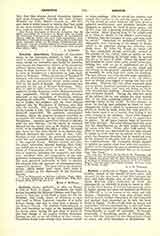

Arsinoe, a titular see of Egypt, now MEDINET EL FAYUM, capital of the district of that name, and situated on the west bank of the Nile between the river and Lake Moeris, now on the Bahr-Youssuf, about fifty-two miles southwest of Cairo. Its episcopal list (c. 250-649) is given in Gams (p. 461). It is the most famous of several homonymous cities in Egypt, greatly favored and renamed by Ptolemy II (284-247 B.C.) in honor of his sister and wife Arsinoe. Samaritan Jews were soon found there, and ere long it rivalled Alexandria for the vineyards and gardens that abounded on its soil, the most fertile in Egypt. It did a brisk trade in cereals and vegetables, and was renowned for its figs and roses. For its piety towards the crocodile it was known as Crocodilopolis, a haunt of crocodiles. It became eventually a flourishing center of Christian life, but in 642 was betrayed by the Monophysite Copts to Amru, the Arab lieutenant of Mohammed. As the modern Fayum (Coptic ph-iom, Fium, i.e. Lake Moeris) it is celebrated for the discovery (1877-78) of a great many papyri manuscripts, some of which are important for the earliest Christian history of Egypt; they are described in the Hellenic section of the reports of the “Egypt Exploration Fund”. It has several Coptic churches and Moslem mosques, and some manufactures, especially of woollen stuffs. Its trade in rose-water and nitre is considerable. The population is about 26,000.
Another Arsinoe was located on the Heroopolite gulf of the Red Sea, and as one of the principal harbors of ancient Egypt carried on an extensive trade with India in silks, spices, ivory, etc. It is mentioned in Exodus, xiv, 2, 9, and Numbers, xxxiii, 7, and is said to be identical with Argueroud near Suez. Arsinoe on the west coast of Cyprus was an episcopal see from the fifth to the twelfth century (Gams, p. 439, and Lequien, II, 1065-68). Several other cities of the name are mentioned in Smith.
THOMAS J. SHAHAN

